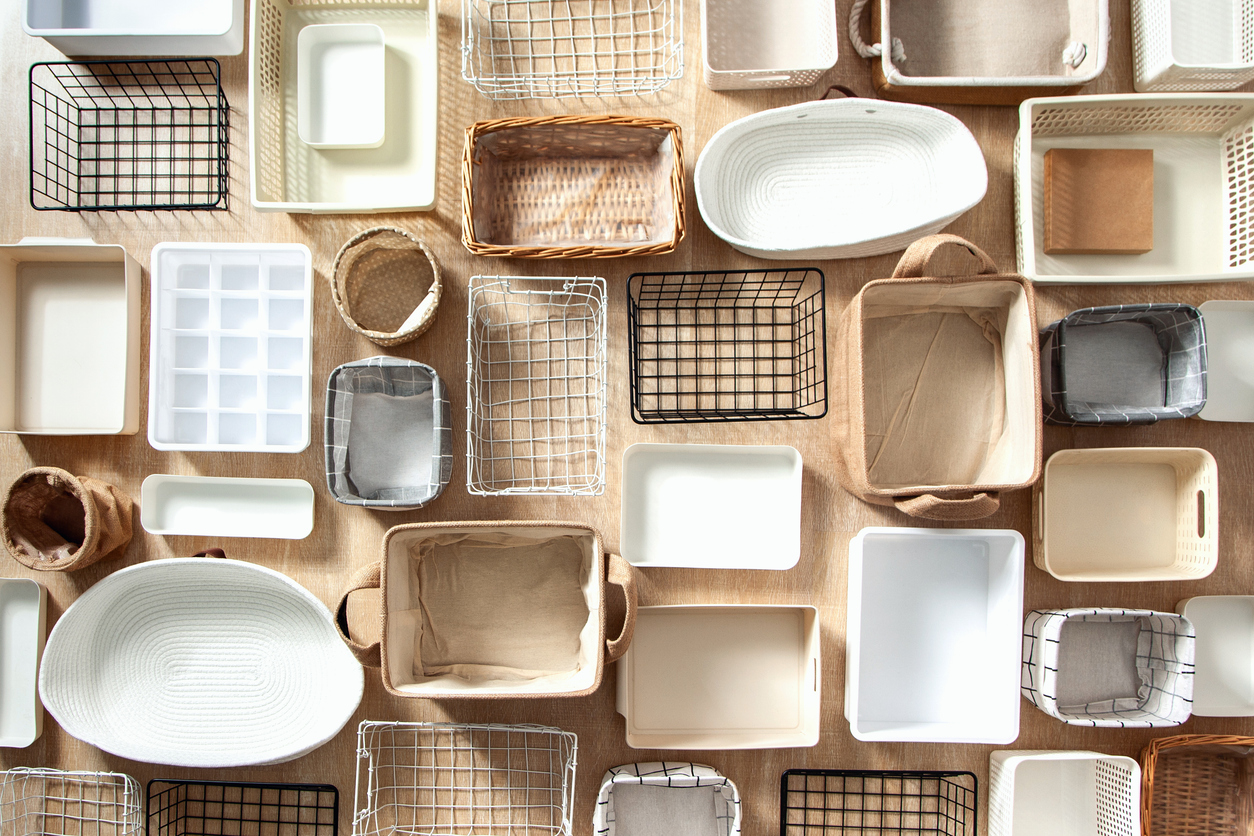
Decluttering your home isn’t just about making things look tidy—it’s about creating a space that supports your lifestyle, reduces stress, and feels good to live in. Tackling your whole house at once can feel overwhelming, which is why the room-by-room method works so well. It helps you stay focused, build momentum, and celebrate small wins as you go.
Whether you’re prepping for a move, minimizing your possessions, or just trying to breathe easier in your own space, this step-by-step guide will help you declutter your home room by room—with purpose and clarity.
Before You Start: General Decluttering Tips
- Set clear goals. Are you simplifying your home, preparing to sell it, or just making room for new things?
- Sort into four categories: Keep, Donate, Trash/Recycle, and Relocate.
- Have bags or bins ready for each category before you begin.
- Work in focused bursts. Aim for one room (or one section of a room) at a time.
- Be honest. If you haven’t used it in a year, ask yourself why you still have it.
1. The Entryway
This is your home’s first impression—and often a dumping ground.
Decluttering focus:
- Shoes: Keep a few pairs by the door; store the rest elsewhere.
- Coats and bags: Donate items no longer used or in season.
- Keys, mail, and odds and ends: Add a small tray or organizer.
Quick win:
Add hooks or a basket for everyday essentials to prevent future clutter.
2. The Living Room
As a shared space, the living room can easily gather random items.
Decluttering focus:
- Shelves: Keep only books or decor you love or use.
- Electronics: Recycle unused remotes, old game consoles, or tangled cords.
- Coffee tables: Clear off anything that doesn’t serve a daily function.
- Blankets and pillows: Keep extras in a storage ottoman or bin.
Quick win:
Limit decor to a few meaningful pieces per surface—less visual noise means more calm.
3. The Kitchen
The kitchen often hides duplicate items, expired food, and gadgets you never use.
Decluttering focus:
- Pantry: Toss expired goods and consolidate duplicates.
- Drawers: Remove unused tools and utensils.
- Cabinets: Keep only the pots, pans, and dishes you actually use.
- Countertops: Clear them of rarely used appliances for more space.
Quick win:
Install drawer organizers or baskets to keep essentials tidy and easy to access.
4. The Dining Room
If your dining room is more of a storage zone than an eating area, it’s time to reclaim it.
Decluttering focus:
- Tabletop: Clear off mail, laundry, or lingering items.
- Buffet or sideboards: Reduce dishware to only what you use for entertaining.
- Decor: Streamline to a centerpiece or art that enhances the room without crowding it.
Quick win:
Set the table, even if you’re not using it daily—it helps prevent clutter buildup.
5. The Bathroom
Small space, big impact—especially when streamlined for function.
Decluttering focus:
- Expired medications, beauty products, and toiletries: Toss them.
- Duplicates: Keep a backup or two, but donate unopened extras.
- Towels and linens: Keep only what you regularly use; donate the rest.
- Under-sink storage: Use bins or baskets to separate items.
Quick win:
Use vertical space for storage—over-the-door hooks, shelf risers, or wall-mounted organizers.
6. The Bedroom
Your bedroom should be a sanctuary, not a storage room.
Decluttering focus:
- Closet: Donate clothes you haven’t worn in the past year.
- Nightstands: Clear off clutter, leaving only essentials.
- Under the bed: Store items in labeled containers or consider clearing it out entirely.
- Dresser drawers: Fold and sort clothes by type; purge anything worn out.
Quick win:
Use the “one in, one out” rule: for every new item of clothing, remove one.
7. The Kids’ Room
Decluttering with kids can be tricky, but it teaches valuable life skills.
Decluttering focus:
- Toys: Keep favorites and age-appropriate items; donate the rest.
- Clothes: Sort by size and season; store or give away what no longer fits.
- Books: Rotate a smaller collection into daily use.
- Art supplies and crafts: Keep only what’s usable and organized.
Quick win:
Use clear bins and labels (with pictures for younger kids) to make tidying easier.
8. The Home Office
Clutter here can hurt productivity—and increase stress.
Decluttering focus:
- Paperwork: Digitize what you can; shred and recycle what you don’t need.
- Supplies: Keep only what you use. Donate extras to schools or community groups.
- Cables and tech: Label and untangle, or dispose of what you no longer need.
- Desk drawers: Organize for daily tasks only.
Quick win:
Implement a clean desk policy at the end of each day.
9. The Garage, Basement, or Attic
These catch-all spaces often become long-term storage units.
Decluttering focus:
- Seasonal gear: Store in labeled, stackable bins.
- Tools and equipment: Keep what’s in working order and donate duplicates.
- Holiday decorations: Purge broken or outdated items.
- Old furniture, boxes, or mystery items: If you haven’t used it in years, let it go.
Quick win:
Install shelving to keep the floor clear and categorize everything by use.
Final Touches: Tips for Staying Clutter-Free
- Adopt the “one in, one out” rule across your home.
- Declutter seasonally—spring and fall are great checkpoints.
- Avoid impulse buys that don’t serve a clear purpose.
- Practice gratitude for what you own, and let go of what no longer serves you.
Decluttering your home room by room doesn’t have to be overwhelming. By breaking the process into manageable areas and making thoughtful decisions, you create a home that works for your life—not against it. Beyond the cleaner countertops and clearer floors, you’ll likely feel lighter, calmer, and more in control. So take it one room at a time, and enjoy the transformation as your home becomes the peaceful, functional space you deserve.







